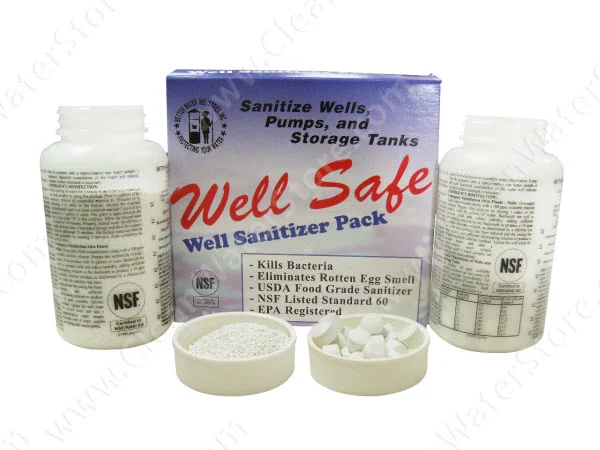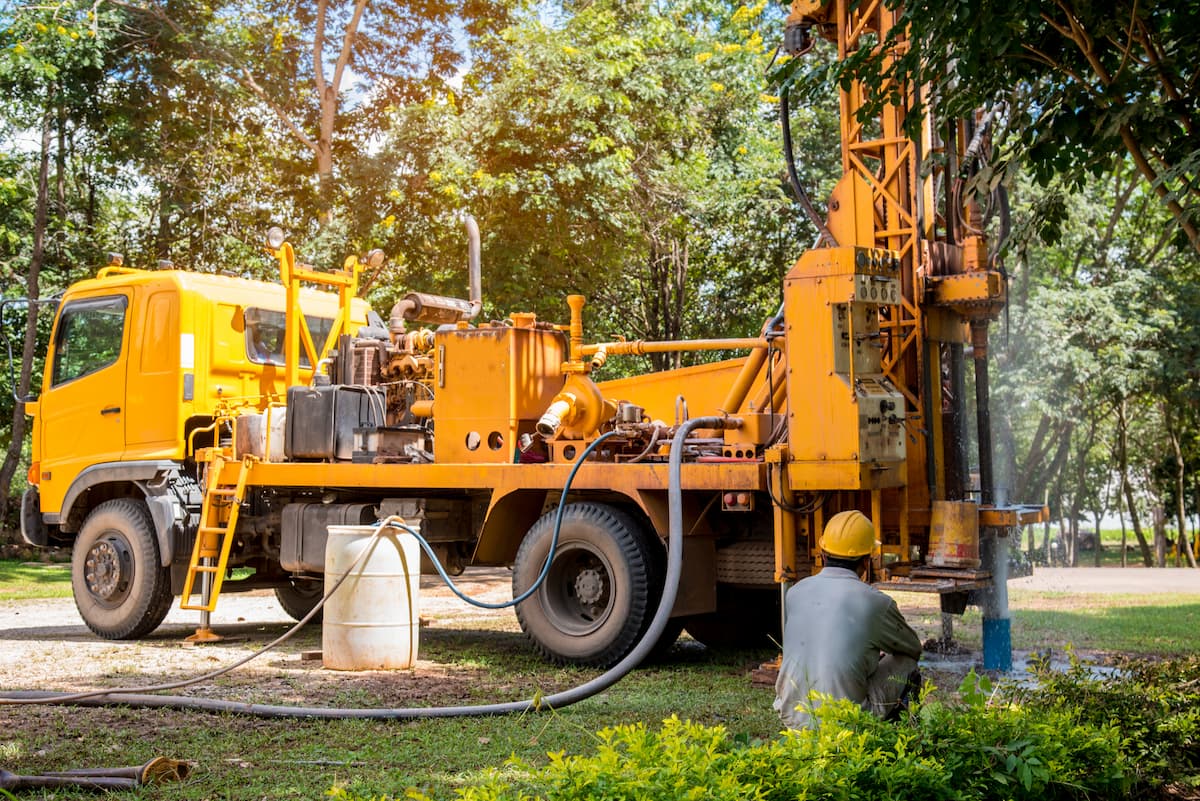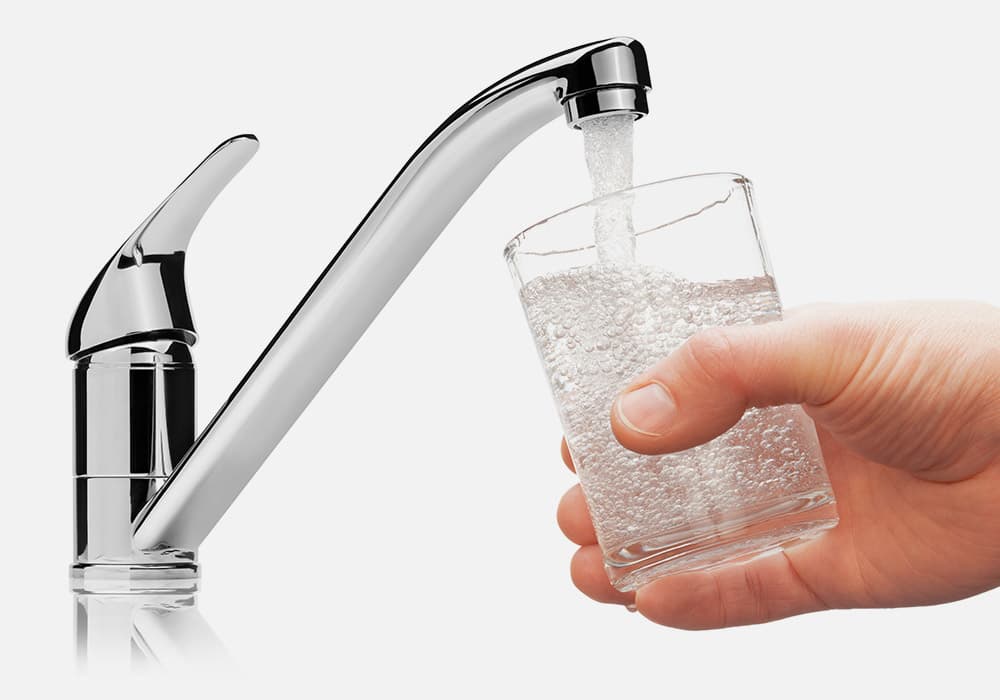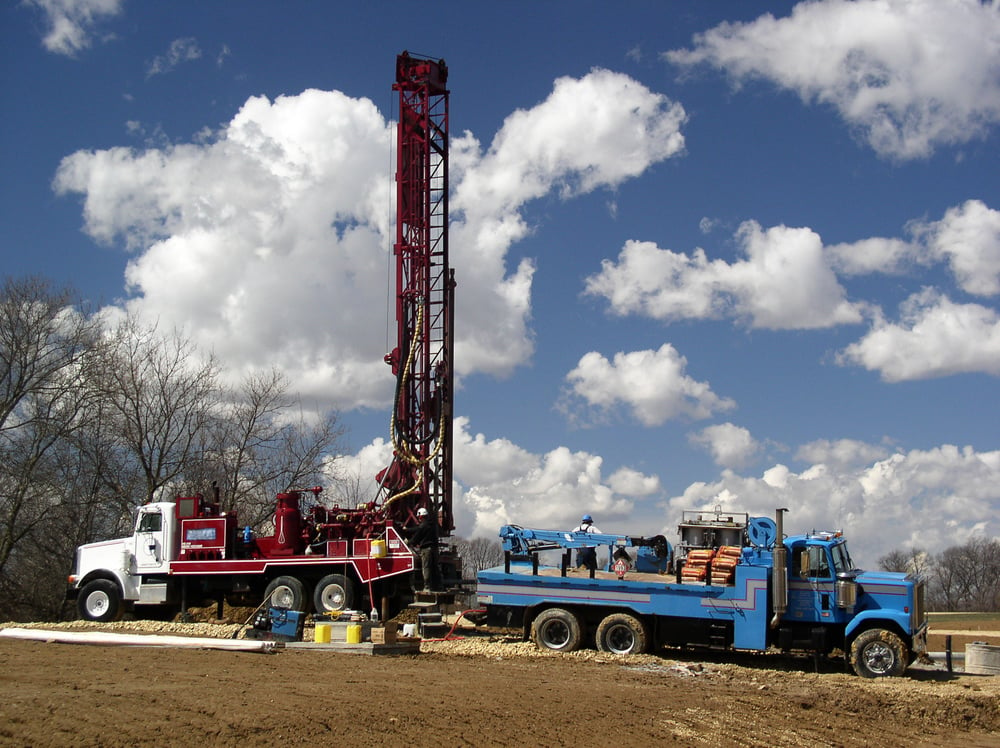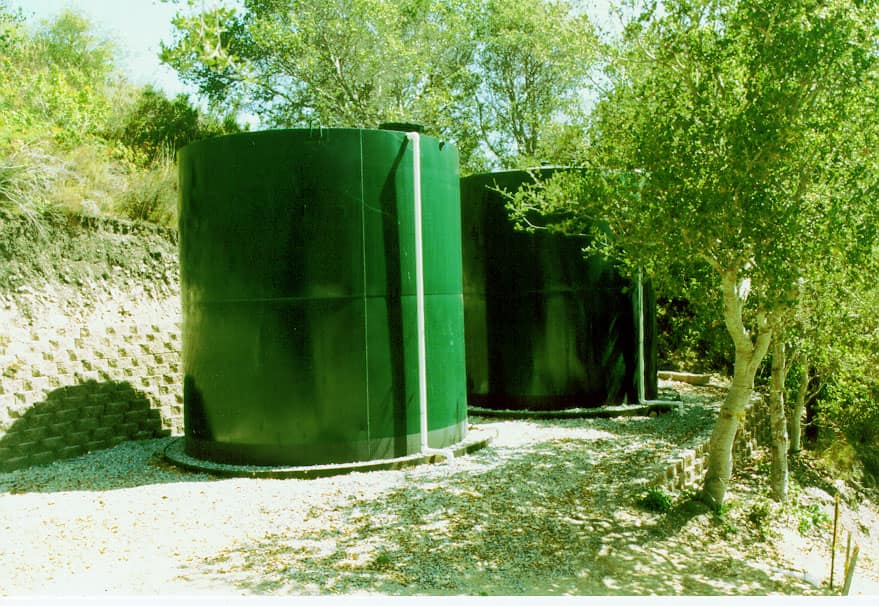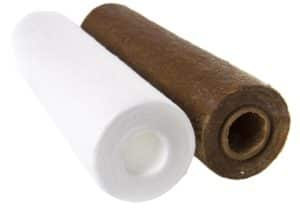How Water Wells Work
Podcast: Play in new window | Download
Subscribe: RSS
How Water Wells Work
Welcome to the Clean Water Made Easy Podcast, Episode One: How Water Wells Work. My name is Gerry Bulfin, WQA Master Water Specialist and Water Treatment Contractor in Santa Cruz, California.
Thanks for listening! During this inaugural episode of “Clean Water”, I will cover the basics of how water wells work, including environmental considerations and sanitation. Proper installation and maintenance of your well is important and hopefully this podcast will help guide those looking to safely use well water on a daily basis.
I have worked as a well water treatment specialist for twenty-five years. Though I generally work in Northern California and am a certified installer there, I have also worked all over the world. I have left behind many satisfied customers. Through this work, I have gleaned a lot of important information regarding clean water and hope to pass on this information to my listeners.
Topics Covered Include:
- Groundwater explained
- Drilled wells explained
- Possible well contaminants
- Considerations for areas near hydro-fracking
- Dealing with cracks and loose fittings
- The first step of proper well management
- Sanitizing your well
My name is Gerry Bulfin. I’m a water treatment contractor and WQA certified Master Water Specialist.
I’m owner and founder of cleanwaterstore.com and I would like to welcome you to the podcast. Hey thanks for listening.
You’re in the right place if you want to learn more about well water, well water treatment systems, and how to improve the quality of your well water. If you’re experiencing stains, sediment, scale build-up, corrosion or odor in your water, or if you’d had your water tested and it came back with a positive for coliform bacteria, this podcast series is for you. Or maybe your water tastes and smells great but you just want to find out more about wells and water quality.
Each episode in this series is broken down into an area or topic. You can listen to each one individually or you can jump around and listen to the ones that pertain most to your application. This series is primarily about well water treatment but also touch on rainwater and spring water as well.
Download FREE Well Water Guide
In this episode, we’re going to cover the basics of how water wells work. It will also go over how to disinfect and sanitize your well. Also I have a free gift for you, a well water cheat sheet and resource guide that I can send you. I created this guide as a companion to today’s podcast to make it easy to follow along with and it has an exploded view of how a typical well works.
It also has a flow rate calculator guide so you can easily estimate what your well water flow rate is. And a step-by-step guide on how to sanitize your well. If you’d like to get your free copy, just text the word “wellwater” all one word, wellwater, to 44222 or go to cleanwaterstore.com/podcast and you get it there, we’ll get it going to you.
The Host/Resource Person
Okay a little bit about myself. I started in well water back in 1989 and I’ve owned several companies in the water business and I’m the founder and CEO of cleanwaterstore.com where we sell custom water treatment systems. I have a California state contractor’s license for water treatment and I’m certified by the Water Quality Association as a Master Water Specialist as well as a certified installer.
I also trained and worked for many years as a state-licensed water treatment plant operator and distribution operator. And we operate numerous small community water systems around Northern California. I also wrote a book on well water treatment, it’s called the Definitive Guide to Well Water Treatment. And I guess I just really love well water and talking all about well water and well water quality.
You know, we have customers on well water in all fifty states and I’ve had the fun and good fortune to be involved with installations and projects involving water treatment in many countries as well. Our custom systems are used by the US government and various embassies and military bases worldwide. We’re also in other states and national parks, and also donated many systems and worked on many projects. We worked with charities and church groups, supporting small communities, hospitals, schools and mostly Mexico, Central South America, and South East Asia.
I’ve been a member for many years of American Water Works Association, the National Groundwater Association, the Water Quality Association, and other water-related groups.
Groundwater /Surface Water
Okay, what is groundwater? It’s kind of amazing to think about it but according to the National Groundwater Association, 47% of the US population depends on groundwater for its drinking water supply. Of that 47%, many get the water from private wells. You know, groundwater is just the water that soaks into the soil from rain, or other precipitation, and moves downward to fill cracks and other openings in beds of rock and sand. It’s a renewable resource. Although the rate at which it can be renewed varies greatly.
You know here in California we have fabulous water with a tremendous amount of rain. We are coming out of a drought and so our aquifers are being recharged now. This is true for other states that are also coming out of a long drought.
Groundwater vs Surface water
Groundwater is really an abundant natural resource. Of all the freshwater in the world, not including the icecaps, 95% is groundwater. Surface water, like some rivers, make up only 3% of our fresh water. Scientists estimate US groundwater reserves to be at least 33 trillion gallons. That’s equal to the amount of water discharged at the Gulf of Mexico by the Mississippi river over the past 200 years. Groundwater is naturally filtered by the earth that holds it. It can however become contaminated by pollution that comes into contact from the earth’s surface.
So, how did it get there? Water from rain and snow follow three main paths. Some water evaporates from the earth’s surface into the air or is breathed out by vegetation and returns to the atmosphere. But some water runs off in streams or rivers and into the ocean. Some water filters into the ground. There, it can float to the surface as springs and move into surface water or importantly, recharge the groundwater deep in earth. Then groundwater moves into these large underground natural storage areas known as aquifers.
As the groundwater moves through the ground, it dissolves minerals that it comes in contact with. So if you think about it, rain is mostly pure water but as it’s falling in the atmosphere it picks up carbon dioxide. This carbon dioxide forms carbonic acid in the water which makes the rainwater slightly acidic.
So as this rainwater penetrates the ground, it soaks down into the aquifer and it comes in contact with the rock in the ground. It could be limestone or a different material such as iron or manganese, and it can dissolve some of these minerals out and that’s what gives water its unique, chemical characteristic. It depends on the ground what type of minerals it can come in contact with.
Drilled or Hand-dug Water Well
So, what exactly is a drilled well? That’s mostly what we’ll be talking about. There are hand-dug wells and those are actually very common in the world. Sometimes it’s called boreholes but they’re just hand-dug, they might be shallow. Those are highly prone to contamination. So in the US and Canada, what’s most common are drilled wells which consists of a borehole in the ground with the upper part lined with casing. This casing prevents the collapse of the borehole walls and prevents surface water from entering the water supply.
And this casing is near the lower section of it, has slots in it, or what they call a well screen. The well driller will pick out what type of screen to use depending on the formation of rock. Your submersible well pump is down inside this casing. So that is why it’s called a submersible well pump because it’s submerged underneath the water. So the intake may be an open hole in solid bed rock, or it may be a screen and gravel pack, this depends again on the geologic conditions. Once the well is completed, it’s pumped to to determine the yield.
Well Yield
The yield is the quantity of water which they measure during the development of it. They usually do it for at least one hour and they’re measuring how much water the well can yield in an hour. They start out by measuring how deep the water is and they they pump it for an hour. At the end of the hour they measure it again and they can figure out how fast the water is recharging or filling in the well.
Well Sanitation
The important step when the well is drilled or serviced is to sanitize the water. So, this is what the professional well drillers will do when they’re done developing the well and the last thing they often do is they shock it with some chlorine bleach. They sanitize the well because when they’re drilling the well there’s a chance that they can introduce bacteria into the ground by their well drilling rig and tools. So sanitizing is very important. Also if you ever have your well worked on you want to make sure that it’s sanitized when they’re done.
Most wells use submersible pumps, pumps that are down in the water in a casing and pumped out to the top. But you might have a pump that is on top of the ground, which is often called a jet pump and those pumps are usually sucking water from a shallow depth. So if you see a pump on top of the ground, and you hear it running, then it's probably pulling from a shallow well. These shallow wells are more prone to contamination. You have to be careful about that. Most folks that we deal with are costumers with submersible well pumps.
Sources of Groundwater or Well Contamination
One thing to keep in mind, most states and provinces don’t regulate or have jurisdiction over your private wells serving a single home or farm. This puts responsibility for protecting the private well squarely on the well owner. Wells have a number of potential sources of groundwater contamination. The foremost of them is the septic system. You obviously don’t want that near the well. By law, they have to be at least 50 feet away and this varies based on the county, but a hundred feet is even better. But they have a certain amount of feet that it has to be away from the well.
But one thing you can have control over is improper waste disposal such as paints, lubricants, cleaning products, pesticide, lawn chemicals, garden chemicals, and fertilizers. These are all things that you want to avoid anywhere near your well.
The other things is, which can be a little trickier to figure out, is if there is an abandoned well nearby. This can be contaminating the water as well. Pretty unusual, but it does happen, there are a lot of abandoned wells. If they are not properly sealed, they're usually filled with concrete to seal them off, then that can cause serious problems.
We’ve seen it happen several times where folks will say “All of the sudden I’ve got oil in my water” and it’s literally petroleum oil you know. It comes back from lab and it’s actual oil. And while it starts out as kind of a mystery, it turns out they have an underground fuel storage tank from say, the 1950’s or many years ago, that they didn’t even know was there and it finally corroded and leaked, now they’ve got the problem. So that’s something that can be a little harder to determine but those are all things that can cause some issues with contamination.
Another one, which we get a lot of calls on, is hydrofracking. Fracking operations drill very deep so they’re usually way below where the aquifer is, thousands of deep below actually. So on one hand, theoretically, they shouldn’t cause any problems because they’re drilling so deep. But because there are so many of them now, there are problems with some of them.
It’s probably a very small percentage, it varies by state and area and I have no idea exactly what the percentage is. It’s a small percent but there are quite a few folks that have problems that started after the hydro-fracking where they have methane, hydrogen sulfide, or they have another water quality issue that come up. So that’s something to watch out for it. If you have a well in an area of hydrofracking, that’s not really something to panic over but you might want to do periodic testing of your well for petroleum products and heavy metals.
Older wells and shallow aquifers are more likely to be contaminated. I can say that if you have a jet pump that’s probably old and you have a shallow well, those are more likely to be contaminated. Deeper wells pass through a restrictive or impermeable layer that decreases the rate which the surface water reaches the aquifer.
How do you figure out what you’ve got? Well, a really good way to go about it is to talk to the well driller, especially if you bought your home and you see a sticker on your well control box then you can call them and get your well log. You probably have the well log that came with the deed. If you don’t, you need to get your well log and have it in your records. Because that gives you a record of what happened when the well was drilled, how deep it is, what sort of strata they went through and what the yield test was. That should all be in the well log.
So most of the well drillers are very nice and they’re happy to give it to you. If they don’t have a copy of it you can often get it from your state or county health department. They all often have a copy of it too because it has to be submitted with the permit. It varies depending on the state but there’s a state department natural resources you can call but I would start by just calling your local or county health department and ask them what can I do to get more information on my well and where can I go.
There’s also the coop extensions, but I would first start with the well drillers and then go from there. So, having the well log gives you a really good idea and gives you additional information about your well, especially if you're having problems with your well. You can use this information from your well log to get background information like maybe the water was great originally but developed iron bacteria over time or the water quality deteriorated. Its very common for the conditions to change because wells get old and different things happen. There’s drought, there’s floods, access to water changes, and other problems with contamination.
Okay, so in terms of the actual contamination of your well, we talked about that a little. But you want to make sure you septic tanks and sewer lines are at least 50 feet away and some counties have greater set back requirements.
One very common thing to do if you have a problem with coliform bacteria, is to inspect you well. Check to see if your well cap is missing or if it’s cracked or broken or if there’s some lose fittings on top of your well. So this is something you can easily do yourself and if you don’t want to get a professional involve and talk to your well driller contractor, you can just literally look at the top of your well. There shouldn’t be any lose fittings around the well. Of course there’s loose wires so you have to be careful because there’s high voltage there, 220 volt usually. But if you see like the top of the well has cracks in it or there’s caps missing, that’s very serious and it's very common to get coliform bacteria in your water from that.
Managing your private well
So the first step in proper management of your existing private well is to do an annual test for total coliform bacteria. The EPA and the World Health Organization recommends this, and most well professionals recommend an annual test for bacteria and nitrate.
There are home kits available. You can’t use a home kit if you’re going to submit this information to a bank for financing, because it’s not certified, but if you just want to get an idea then you can get a home test kit for that. But especially if you’re new to the home or if you haven't tested for some years, a local certified lab is very good. If you can’t find a local certified lab to do the testing, you can also send the test away to a lab.
We use national testing labs, their water check is a really good value. Considering what you get, it is pretty low cost and they can test for bacteria, a complete general mineral analysis, pesticides, herbicides, heavy metals and many other things so it gives you a really good idea of all kinds of different contaminants. But sometimes local labs are good to get tests too because you can talk to those guys and they have a lot of experience in your area.
Now if your well test positive for coliform bacteria, a sanitary well cap might help solve the problem. But you need to find out what the source of the bacteria is. You can’t just test for bacteria and then shock chlorinate it and forget about it. Like maybe your well was worked on recently and so you can sanitize your well and then retest for bacteria after that. Then if you test it periodically you’re good to go.
Importance of Sanitizing Your Well
You know, there’s a lot of well professionals I know that recommend folks don't do their own well sanitizing, even though it’s commonly done. But the reason they don’t like you to do it yourself is because sometimes people put too much bleach in or they don’t put enough in, and they don’t do it right.
If you put too much chlorine bleach, if you just dump gallons of bleach in your well, that can really have a negative effect on your well. It can wreck your pump, your check bound, it can corrode wires, it can do different things.
So the important thing is, you want to have between 1 and 200 parts per million of bleach. It’s not that hard. If you know your well depth, or you can estimate it, and you follow the chart, it’s not that hard to do your own well sanitizing. But, just to get an idea, you’re adding enough bleach so that you have 1 to 200 parts per million of chlorine residual in the water.
Then you’re recirculating this water by running your garden hose until it gets going through the household pipe and you run it back down the well. You put it over to the well where you added the bleach to begin with and so you have water circulating in the well, going into the pipes, and going back down the well.
Chlorination
Once you’ve got the chlorinated water circulating, you shut the well pump off and let it sit for at least 8 hours, 12 hours is good. And then you retest at that point. If you have less than 10 parts per million of chlorine left, then you want to do the procedure over again. So that means that there’s a extremely high chlorine demand in the water and it used up all that chlorine. You probably have a bacteria problem or something with a serious demand.
So they have those high level chlorine test kits and they’re inexpensive so that makes it very convenient. A lot of folks often add like say half a gallon or one gallon of bleach into like 30, 40 gallons of water and pour that down the well. So, it’s a good idea to follow the chart and to know how much chlorine you should use. Powdered bleach works too, but we find that liquid bleach works good. Peroxide doesn’t work well for sanitizing a well so really bleach is the way to go. You can run the water out on the ground out of a hose bib so you don’t have to suffer through days or weeks of heavily chlorinated water in the house. Also you don’t want to run a lot of chlorinated water down in your septic tank either.
So you can just flush the water, run it until it test s0, or wait until there’s no smell or taste of chlorine in there. Then you can wait like a couple weeks and then retest for coliform bacteria and see where you’re at. In the meantime, if you do have a positive test for coliform, either regular coliform or e-coli which is more dangerous fecal coliform, obviously you don’t want to drink the water. You could boil it but you have to be careful bathing in it and if you have kids especially, you can get an infection.
Testing your Water
So, what other things do we test for? Well, what we recommend is that you want to take a look around where you live. If you live in a remote area and there’s no heavy agriculture or industry, freeways, highways nearby your home then you can do nitrate bacteria in the general mineral analysis.
Like I’ve said before, if you’re new to the well, it’s not a bad idea to do a exhaustive test for pesticides, herbicides, and also heavy metals, arsenic and then also radon. Radon is a gas that’s odorless and it’s very dangerous. So that’s another test, it’s a good idea to do it at least once. Maybe in your area there is no radon, maybe you're in an area where there’s a lot of radon. So it just depends on the strata, what is down in the ground determines if you’re going to have much radon or not.
So you want to get your well tested or test it yourself at least once a year for coliform bacteria, nitrate, dissolved solids, pH and hardness. We recommend those because you can keep a baseline every year. You do your test for coliform, nitrate, dissolved solids, pH and hardness – that’s the minimum number of test you want to do.
But if you do that once a year over a period of years you can start to track “Hey what’s happened? The dissolved solid is going up in my ground water or the water is getting harder”, in other words, the ground water is changing, so that’s good to know. If you see a decline in water quality or you suspect contamination in local sources like I said, you may need to do a more thorough investigation.
Flow Rate Test
The other thing you want to do is a flow rate test. A flow rate test tells how many gallons per minute your well pump yields and that’s the thing we’re going to talk about in the next podcast episode. It’s very easy to do, it’s really good to know how many gallons per minute your well pump is pumping. Especially if you’re looking into water treatment systems in order to size them or you want to get a water filter, you want to know your well flow rate.
Okay so let’s go over the most important points in this episode. One, check your well cap. Make sure there’s no crack or lose fittings Check around the top of your well. Make sure there’s no potential source of contamination. Try to keep your any potential source of contamination 50-100 feet away at least. Test your water annually for bacteria and nitrates.
But also test for a general mineral analysis such pH, hardness, dissolved solids and then keep a record year to year so you can spot changes in your groundwater. If you suspect more serious contamination, get an exhaustive test on for pesticides and herbicides. It’s not as expensive as it used to be. And if you want to get a copy of our well water treatment cheat sheet and resource guide then just text the words “wellwater” to 44222 or you can go to the cleanwaterstore.com/podcast and get a free copy there.
Next Podcast Episode
In the next episode we’re going to go over how you can get a good idea of how many liters or gallons per minute your well pumps. Knowing and periodically measuring the flow rate from your well is important to know and it’s also just good to know how well your well is working and help for troubleshooting pressure and flow problems in the house.
So thanks again for listening. Talk to you soon.
7 Signs Your Water Well is in Trouble
If you find the information here helpful, please share it with your friends.
[bctt tweet=”“Wells have a number of potential sources of groundwater contamination”” username=”@gerrybulfin”]



